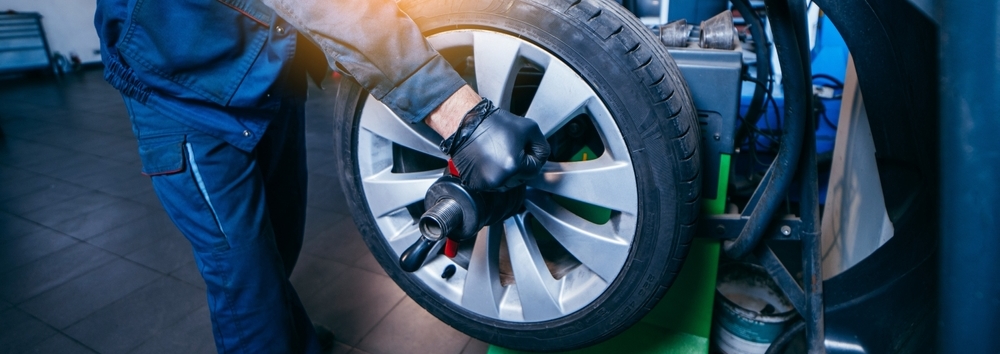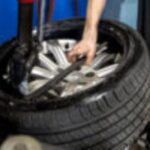
30 Apr Spring Tire Care: Alignment, Balancing, and Tire Rotation
 Now that the weather is warming up, our schedules are filling up, too. More outside activities, traveling, and family events will take over our weekends. This means it’s time to schedule your vehicle’s routine tire maintenance service. Your spring tire care should include wheel alignment, tire balancing, and tire rotation to achieve optimum vehicle performance. Keep reading for more helpful tips to keep you and your auto safe while on the road this spring.
Now that the weather is warming up, our schedules are filling up, too. More outside activities, traveling, and family events will take over our weekends. This means it’s time to schedule your vehicle’s routine tire maintenance service. Your spring tire care should include wheel alignment, tire balancing, and tire rotation to achieve optimum vehicle performance. Keep reading for more helpful tips to keep you and your auto safe while on the road this spring.
Spring Tire Care
Your car’s tires are the only components that directly contact the road. They affect your vehicle’s handling, comfort, braking, and overall safety. Routine tire maintenance is essential to protecting your safety and the safety of other motorists.
Air Pressure
Proper air pressure is an easy way to help retain good fuel economy and extend your tire’s lifespan. Find the correct tire pressure in your owner’s manual or the sticker on your auto’s door jam. The psi on your tire’s sidewall is the maximum pressure safety rating – not the fill amount. Check your tire’s air pressure at least once a month (or every time you fill your gas tank) with a quality gauge stored in your glove box. You may purchase one of three types of tire pressure gauges at most auto parts stores: digital, dial, and pen/stick.
- Over-inflation: Too much air pressure creates traction primarily on the tire’s center section, causing excessive wear in the center of the tread and little to no wear on the tire’s edges.
- Under-inflation: Too little air pressure creates traction primarily on the tire’s outer edges, causing excessive wear on the outer edges of the tire tread and less wear in the tire’s center.
Alignment
Wheel alignment is the measurement ratio of the position of the wheels in relation to each other and the ground. Each vehicle has factory-specific wheel alignment settings. When alignment measurements are outside the specified range, uneven tire wear can result. Additionally, misalignment may cause compromised vehicle handling and lower fuel economy.
Schedule a wheel alignment service after installing new tires and anytime you feel changes in steering or handling. Your vehicle’s wheels are correctly aligned when the steering wheel is straight and your car drives in a straight line without moving or pulling to either side.
Tire Balancing
Correctly balanced tires help minimize uneven tire tread wear, provide a more comfortable ride, and extend their life. To balance tires, service technicians attach small weights to the metal rims that limit the wheels’ vibration as they turn. Newly installed tires and tires removed from the wheel to repair a puncture also require tire balancing.
Tire Rotation
Tires on the front and rear operate at different weight loads and execute different steering and braking functions, resulting in unequal tire tread wear. You must rotate your tires to gain the longest lifespan and best performance. Most manufacturers suggest tire rotation intervals every 5,000 – 7,000 miles. Check your owner’s manual for tire rotation interval recommendations for your vehicle.
Tire Tread
Tires depend on adequate tire tread depth to maintain traction and shed water on the road. Check the tire tread monthly for excessive and uneven wear. Use a tread depth gauge to achieve the most accurate tread depth measurements. Always take measurements in three locations across multiple areas of each tire’s tread:
- The outer edge (the side facing you)
- The center
- The inside edge (the side facing the vehicle)
If you notice uneven wear, bald spots, cracks, or embedded debris, schedule a tire service to address the issue immediately.
TPMS Warning Light
The Direct Tire Pressure Monitoring System (TPMS) works similarly in most vehicles after 2007. A battery-powered sensor mounted to each wheel constantly monitors each tire’s air pressure. A TPMS warning light may illuminate the dashboard if the sensor registers the tire air pressure at 25% of the recommended pressure. A TPMS warning light that blinks for 60 to 90 seconds and then remains steady indicates a system malfunction or faulty sensor.
Spring Tire Care Maintenance in Ann Arbor, MI
Ron’s Garage has served Ann Arbor and the surrounding areas of Saline, Dexter, and Pittsfield Township since 1982. We offer routine spring tire care maintenance at a fair price and emphasize customer satisfaction. Our staff includes state and ASE-certified technicians trained to use the latest tools and equipment when servicing your vehicle.
Schedule A Spring Tire Service
Ron’s Garage is pleased to provide spring tire care: alignment, tire balancing, and rotation. We sell most major tire brands and have a wide range of tire styles and sizes to fit all makes and models of vehicles. Our Road Hazard Warranty will set your mind at ease, knowing you can swing by the shop for three years after you purchase tires with us if you encounter any problems.
Call (734) 961-4701 or visit us online to schedule your tire service.

